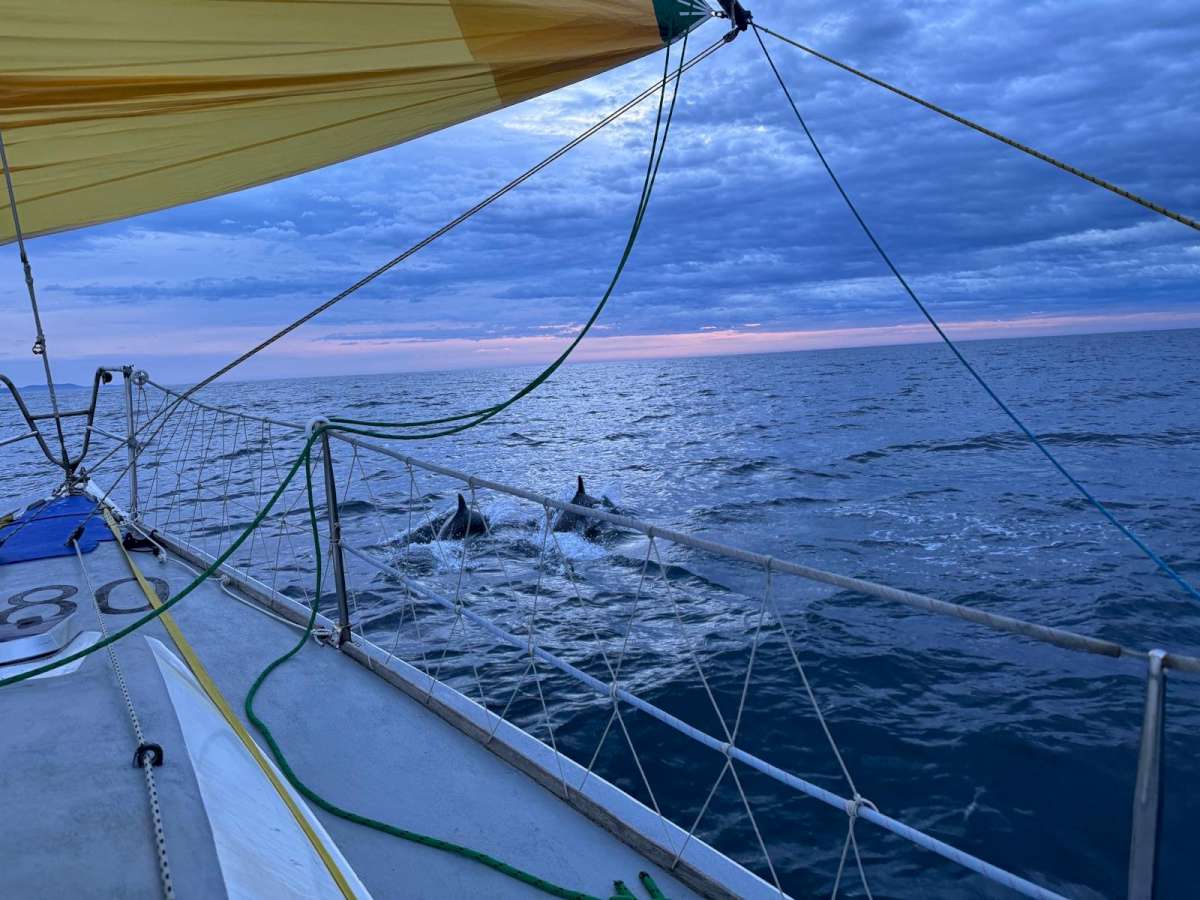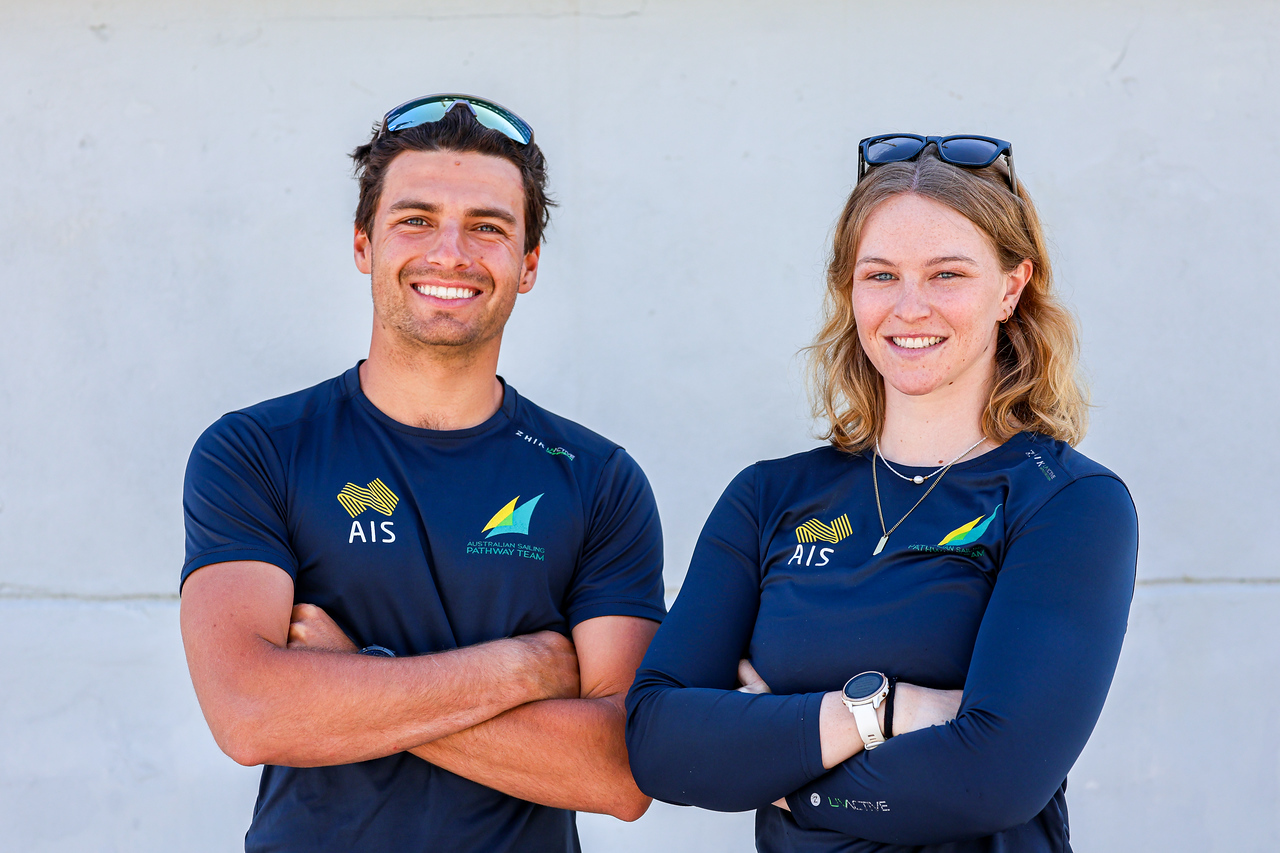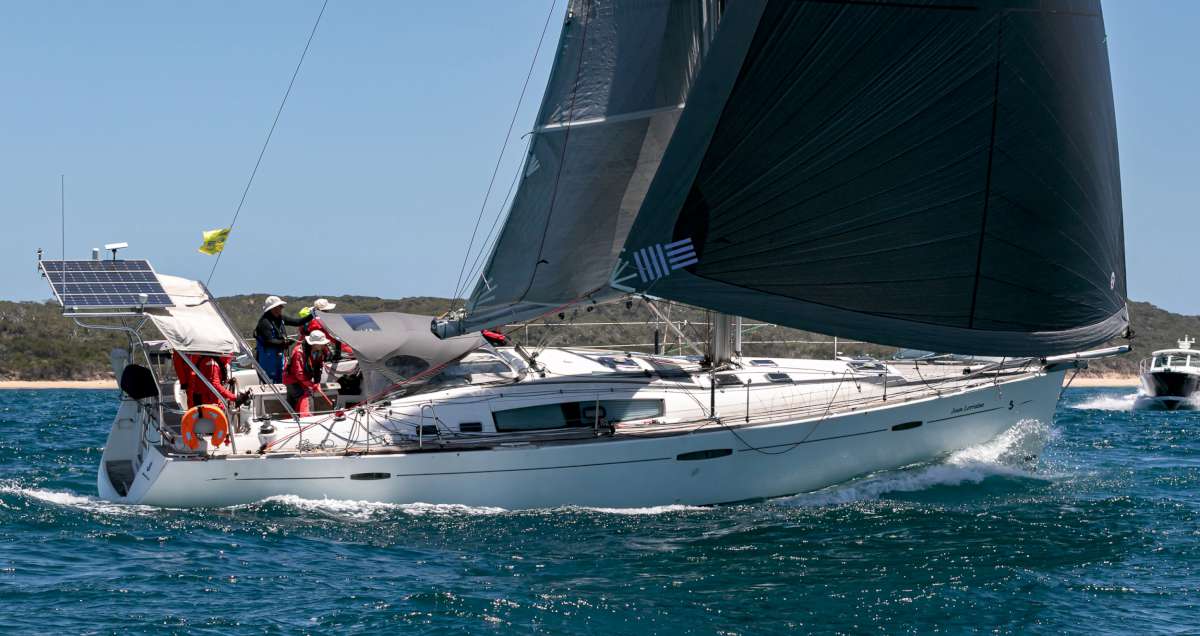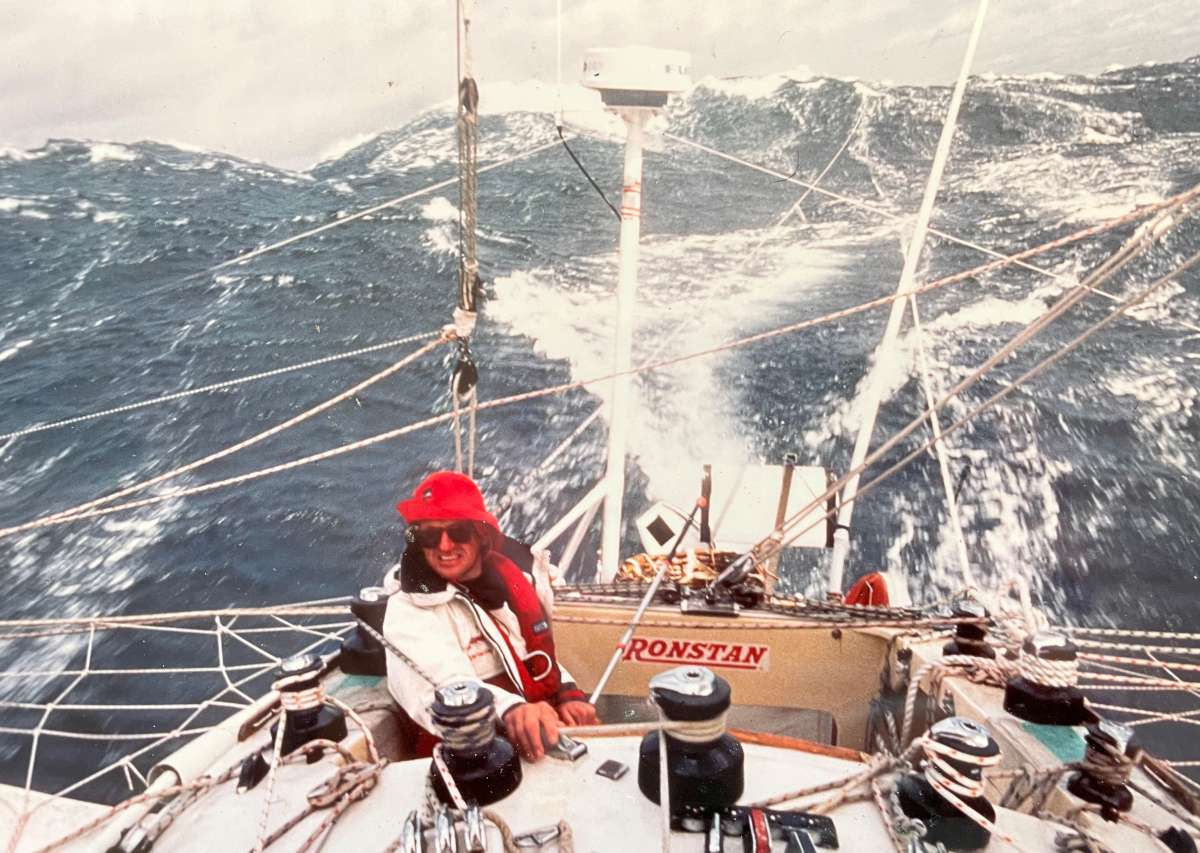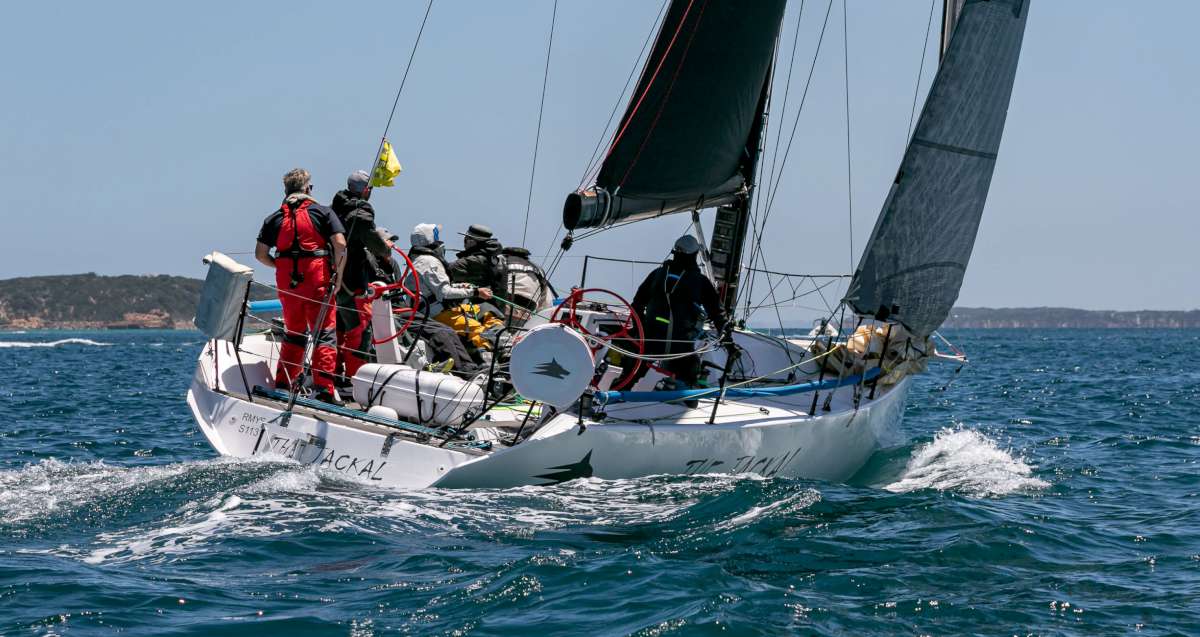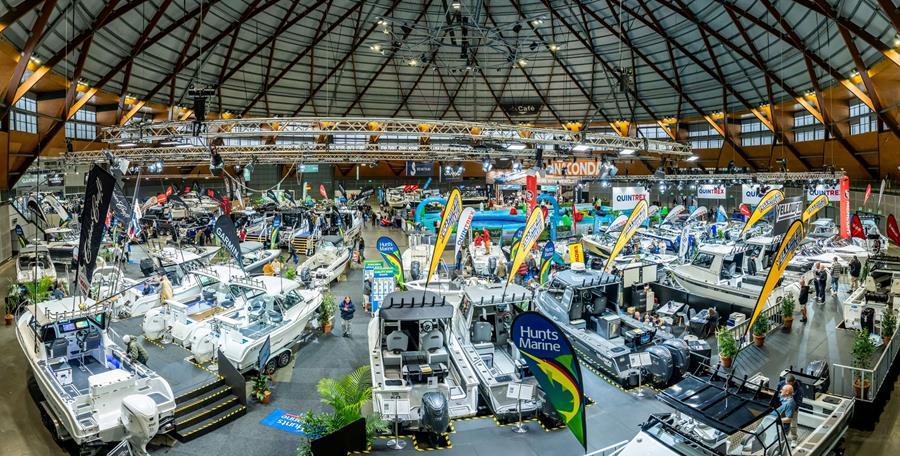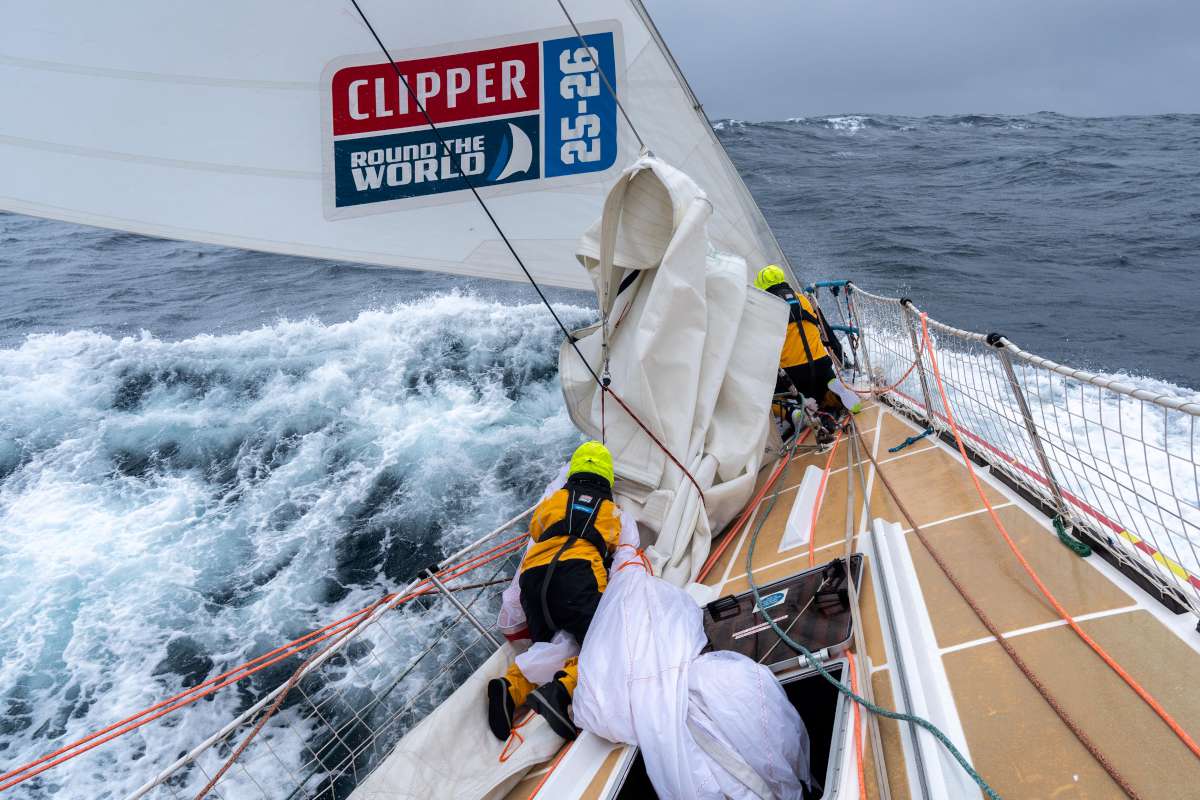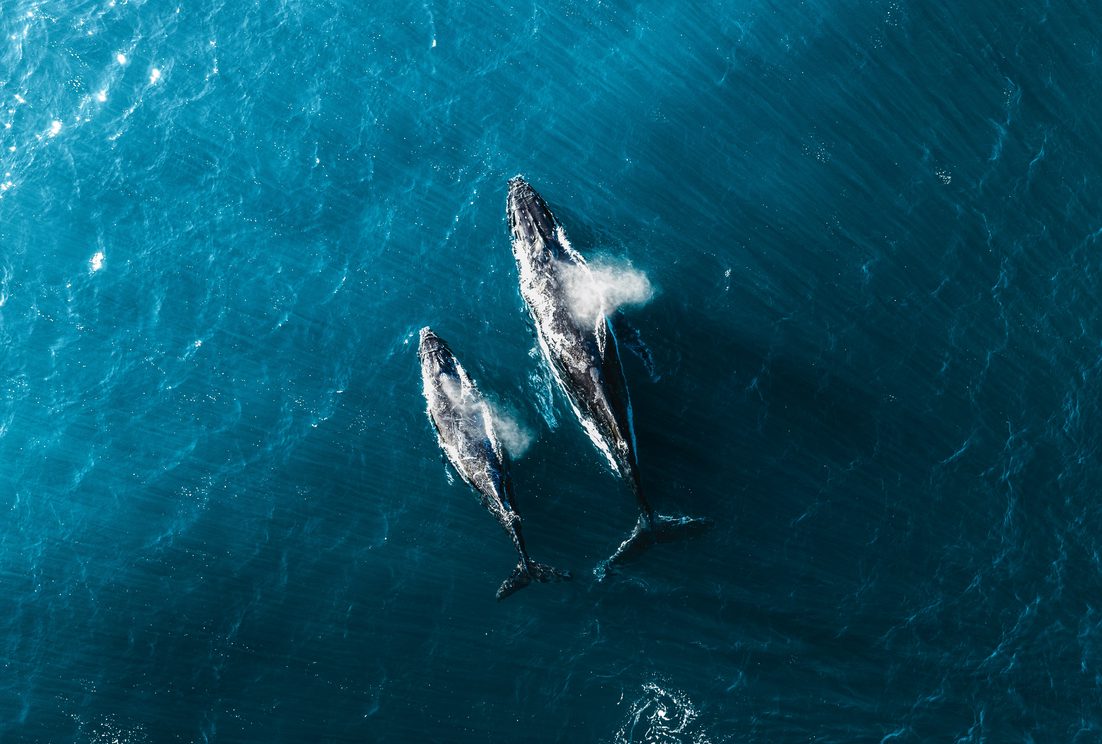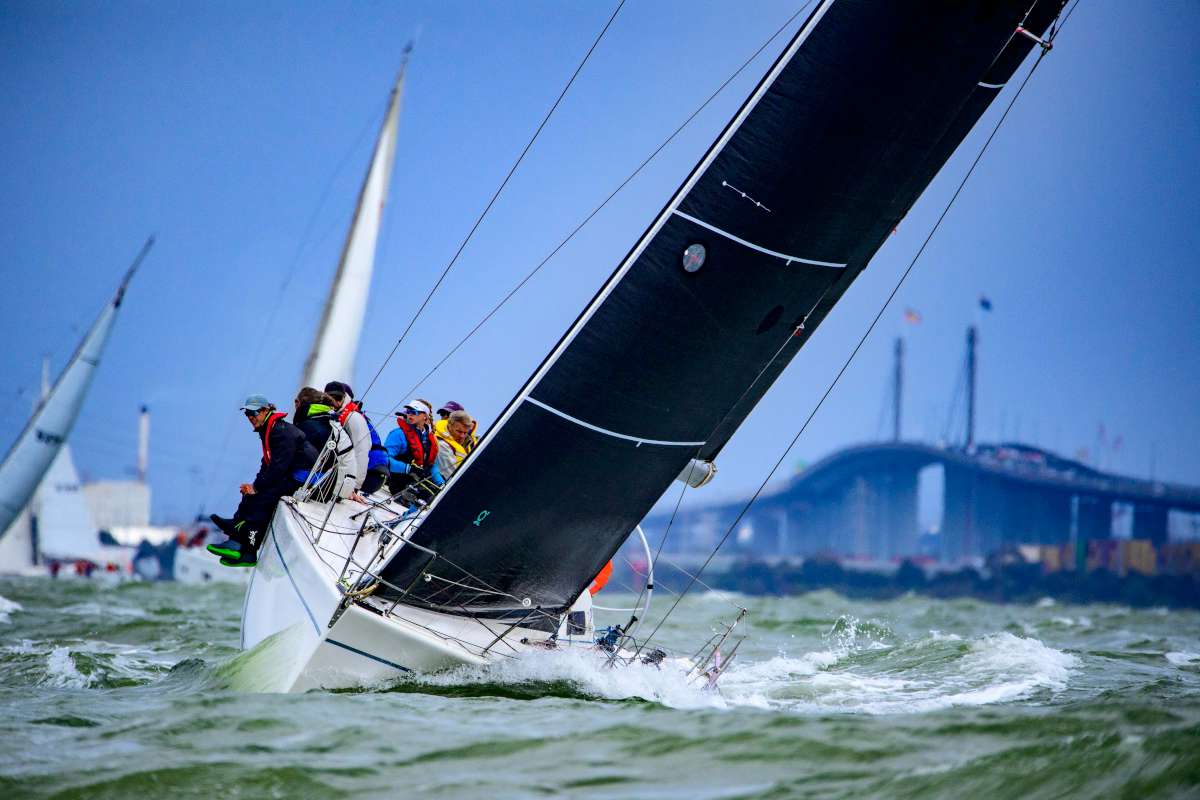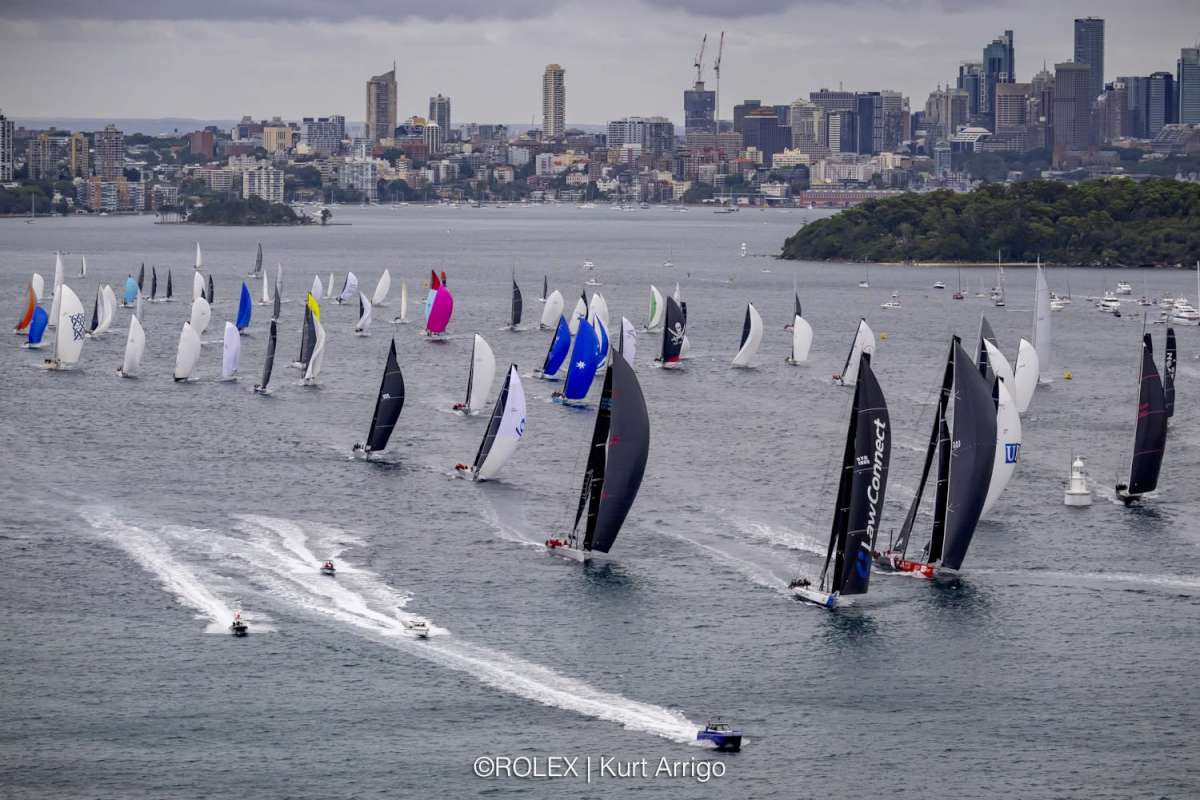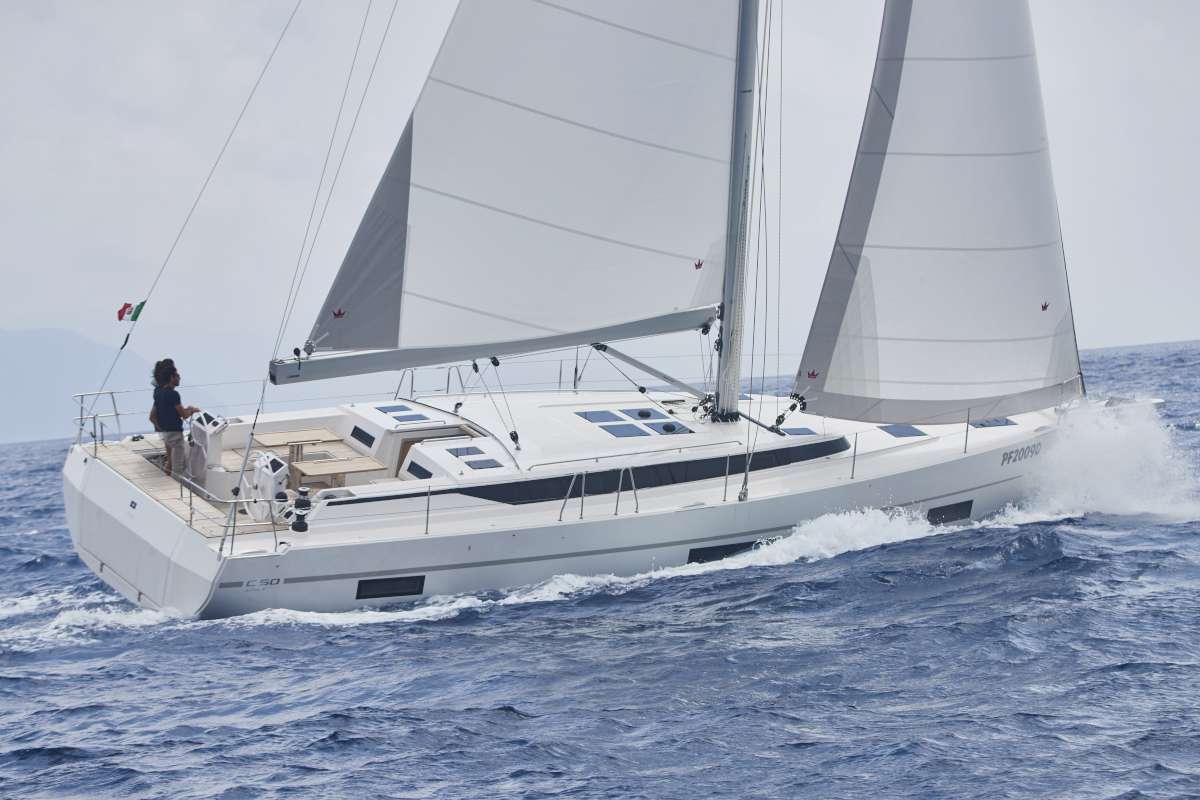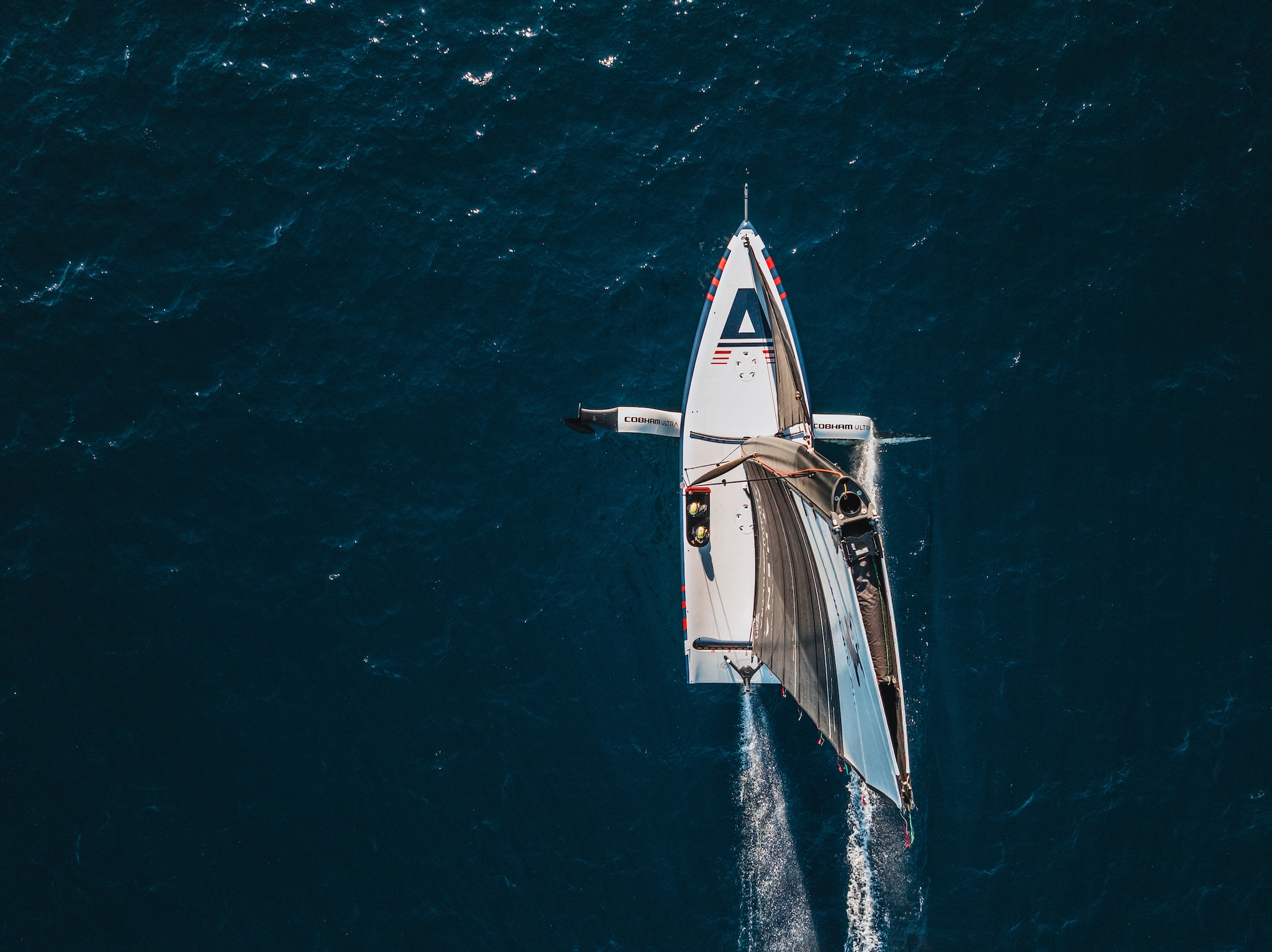On Monday February 21, Australian sailor Lisa Blair set sail from Albany, WA in a second attempt to sail solo, non-stop, around Antarctica in record time aboard her yacht ‘Climate Action Now’.
Blair is still trying to raise money to cover project costs. To sponsor Blair, see: https://lisablairsailstheworld.com/sponsors
In her latest blog post, Blair reaches peak sleep deprivation, Climate Action experiences a 160 degree roll over which results in a flooded cabin and Blair makes some repairs to the engine.
Blog day 68 & 69,
Latitude 49 04.46S
Longitude 41 38.76E
Baro 1004
Air temp 2c
Local time 0500 UTC+2
LIVE TRACKER
Hi all,
Apologies for not getting a blog done yesterday it was a really big day, so I have wrapped yesterday and today into this blog.
The winds remained light-ish over the early hours of the morning on day 68. I ended up downloading a weather grib file to see what was happening, because everything was indicating that I should be in the middle of a massive storm. But here I was, sailing close hauled (sails in tight) in 17 – 20 knots of wind and I wasn’t going anywhere fast.
As I watched the grib file download it became clear very fast what was happening. I had already been sailing through the NNE to NE winds and they were backing to the N and easing as I sailed through the literal eye of the storm. I was actually just skirting the edge of the calm centre of the storm, so I was getting dotted blue skies with areas of clouds around me. I could also see that in a few hours I would be once again getting bashed around by one of these huge storms.
I made some porridge and completed my normal checks. I still had only managed two hours sleep the night before, so I was yawning and operating in a heightened state of exhaustion. I was almost so tired I was barely awake, if that makes any sense. I wanted to wait for this shift in winds to arrive so I could decide if I needed to put the fourth reef in or not, and I needed to adjust the trim anyway as the winds swing around.
I was still bashing up wind which I think is the hardest point of sail. Climate Action Now was healed over at 45 degrees and we were traveling into the NE swell and crashing off the backs of the five metre waves that were fast building in size.
I tried to sort a few things out around the cabin, but everything was so hard with the conditions, and I was so exhausted that I just kept ending up in a puddle of tears sobbing. It wasn’t a pretty morning that is for sure. By lunchtime the new winds started filling in and I watched the barometer fall. It was a hard and fast fall as we moved out of the centre of the low-pressure system and moved into the most significant section of the storm.
The barometer had been at 998 and it was due to drop all the way to 967 before coming back up again. A rough rule of thumb is that if you have a greater pressure change of three mb in an hour that you can expect more than 30 knots of wind. I was seeing a five mb pressure change that just continued to happen, so I knew it wasn’t going to be good.
We were starting to get 30 -35 knots of wind now so I went back on deck and furled away the No 2 headsail. I had been using just a small amount of it to help drive us forward with the close-hauled sailing. But now that the winds have shifted, I was able to ease out the sails and alter my wind angle to a beam reach (winds coming across the boat at 90 degrees).
I was so ready for bed, and nothing looked too alarming yet, and I was prepared to put in the 4th reef in the mainsail, but at that moment I didn’t really need it. I was getting the occasional 40-45 knots of wind that was causing a round up into the wind but nothing alarming. I decided to prep for bed and started boiling the hot water bottle water in the kettle.
As I was doing this, I realised that I was shivering uncontrollably. There was no reason why, I was wearing the same layers as every other day and the conditions weren’t any colder, then it clicked. I had hit a critical point in my sleep deprivation where I was so physically exhausted and running on empty that I could no longer produce enough energy to keep myself warm. Basically, I was shutting down. And that is bad.
Then I started crying because I was so mad at myself for getting to this critical level of exhaustion, and how difficult the conditions were and how much I just needed a break. Just a day to collect myself and get some sleep. I spent 20 minutes trying to compose myself, but I kept breaking and would start crying again. I needed fuel and I needed sleep asap or I would only get worse.
I made and drank a protein shake and then had a protein ball before finally grabbing my hot water bottles and climbing into bed. I spent nearly 30 minutes shaking before I finally warmed up enough to sleep. Not 10 minutes later and we were hit. I could feel Climate Action Now getting lifted on a wave far larger than all the others around her. We were tossed on our side and there was this enormous roar of white water as it struck and completely engulf us.
I had my lee cloth (a tied-up barrier to stop you falling out of bed) up in my bunk as I was on the high side, but even so, I ripped my eyes open as we rolled and needed to wedge my arms against the navigation station partition. Even wedged in as I was, I could feel us roll past 90 degrees and keep on going. I don’t know the exact degree that we rolled over to. We didn’t go all the way over, but it was a close thing. We had to have gone at least gone to 160 degrees.
I scrambled out of my sleeping bag and stood in the main cabin shaking from adrenaline and fear as I took in the carnage of my living area.
The locker lids had flown off and were crumpled in a heap on the floor. The fridge lid was missing, anything that had been lying around was suddenly somewhere else and there was a line on the roof of the cabin where the water fell to as we rolled. It was almost the ceiling further confirming that I rolled to at least 160 degrees and the mast was well and truly under water. Thankfully we swung back upright with the weight of the keel.
It took me a second to notice that my wash board (I have a Perspex board that clips around my hatch to catch most of the water but allows ventilation) was missing. As I looked outside the hatch, I noticed it lying on the cockpit floor. I then noticed how wet the towels that were hanging up weren’t just wet they were sopping.
Crap, I realised that the wave hadn’t just rolled us. it had also flooded us. We rocked back on a wave, and I was startled to see a bucket load of water coming out from under the stove and pouring onto the cabin floor. I needed to check the sails and then I needed to get this water out.
I took a quick look at things on deck through the hatch, and the Perspex dome, and again my mast was still standing proud, a real testament to David Lambourne Yacht Rigging and Consultancy and the Hamma Regatta Series rigging wire from Arcus Wire and Rigging that it was so strong. The deck was fine, so I turned my attention to the cabin and started righting things.
As I was sorting the boat out, I suddenly wondered if much of that water had got into the lockers under my bunk, mainly the battery box that is the forward compartment.
We rocked again on a wave and more water spilled from under the bunks and off the shelf under the stove. And I already had my answer but when I opened the battery box I was very alarmed to see that the compartment was half filled with water. Crap, lithium batteries and water don’t mix very well and I was getting increasingly worried that I might lose my batteries. I grabbed a bucket and a little hand bilge pump and started bailing, I took 2.5 buckets of water out of that compartment before I was happy.
A fantastic company in the Gold Coast called Safiery designed and installed the battery system. They specialise in lithium and renewable charging sources like solar and we used all Victorn components. Victron are fantastic at waterproofing most of their products, and thankfully the items that were low in the locker and therefore had been fully submerged were ‘potted’.
Potted became my new favourite word while doing the refit. What it means is that the electronics have been cast in a resin like substance to seal them in from water damage, which made them perfect for boats. Not all of their products are fully potted but they almost all have an IP rating of some kind. The batteries could be submerged up to 70 per cent before the water would damage them so I was hopeful that they would survive.
I wasn’t too sure of the wind generator controllers, but I didn’t have time to worry about that as I needed to get that water out of the boat.
I was carrying my sixth bucket of water to the hatch to poor outside when we were struck again. I was looking out the hatch and all I could see was the grey skies disappear only to be replaced with a soaring wall of white water bearing down on us.
I had a split second to react where I dropped the bucket of water on the cabin floor and dived for the support pole in the centre of the boat. I reached it at the same time the wave struck. We were tossed on our side and my legs and hips were flung up before I fell back to the cabin floor again. I was really starting to shake now as it became drastically clear that my seas had just become extremely dangerous.
The winds blowing in from the NE had managed to develop a five-six metre swell but as the new wind arrived from the NW they were also bringing with them a six-seven metre swell and where the two swells met they were making waves double the size of everything around us. My winds were still only 35-40 knots but getting worse.
The swell was only six to seven meters except for those knockout waves, and I had only been in the second section of this storm for a few hours. It was forecast to rage for the remainder of the day, the whole night and into the morning the next day as one of the longer storms of this trip. If the seas are this dangerous at the beginning, I can only imagine how rough it was going to get.
Without needing to think about it too hard I rushed and got kitted up in my Musto MPX foul weather gear and climbed on deck. I was scared to go on deck because if we were struck again while I was outside, I could really get injured by the force of an impact like that, so I employed the rule of never take your eyes of the waves while I was out there.
In one of those knockdowns somehow the lazy running backstay (a rope that runs from the back deck to three quarters up the mast) had managed to wrap itself around the starboard side wind generator and we had broken yet another wind generator blade. I took in the conditions around me and while most of the seas were not alarming when those extras came through it was breath taking.
The winds were pulling the tops of the waves off and sucking them sideways. Instead of looking across the waves I was craning my neck back to look up at the wave. It was like looking at the roof on a four-story building, only the building was moving and coming right at you. When you were lifted up to the peak the back of the wave falls away and it looks like a 30-foot drop into nothing.
I was still sitting in the cuddy (the protected dome section of the cockpit) taking all this in and trying to get the courage up to climb to the back of the boat. If I could stay near the cuddy it was fine because I could dive for the shelter it offered but on the back deck while I clear the wind generator of the running backstay line I was completely exposed.
I watched the waves for a bit to try to find the rhythm and after a few false starts where I left my shelter only to see a monster liquid mountain bearing down on us causing me to dive back under the cover I finally just sucked it up, I needed to put the boat hove to and to be able to do that I needed to put the fourth reef in and to be able to that I needed to free this line. So, sucking some deep breaths, I scurried back to the wind generator and untangled the line.
As soon as it was clear I scurried back to the cuddy before looking around at the waves again, only to notice that I didn’t actually clear the line at all, when I had pulled the rope off I had gone the wrong direction and put a whole turn in it. Bugger, I needed to go back again. Watching for another break in the swell I scrambled back and managed to get the line clear.
My heart was still pounding from the risk, and I didn’t want to linger on deck, so I started to get the lines ready for the fourth reef to be put in. The winds were now blowing at 45 knots and when the winds get this strong it can be almost impossible to actually pull the sail down, there is enough friction from the wind alone to keep it up in the sky. So, I very slowly used the luff (front of the sail) reefing line to winch the sail down before securing the back end.
I then winched the storm jib sail to the wrong side of the boat putting us hove to before scrambling back to the helm and tying off the wheel to port. It was done, we were now hove to. For those who don’t know, hove to is the storm survival technique where you centre the mainsail, pull the jib to the wrong side of the decks and tie the wheel of to the windward side to stall the sails out and this causes you to drift sideways creating a slick of disturbed water that acts like a barrier to the swell and helps to keep you safe.
Safely hove to and still shaking I didn’t waste time exposed on deck and crawled back inside the cabin to continue bailing the water out. I ended up removing 18 buckets of water from the bilges in the main cabin, all from that one wave. I was beyond exhausted now as I still hadn’t slept and I was still shaking out of control, so I heated up a freeze-dried curry for some fuel, re-heated my hot water bottles and dived into bed which was now 5.00pm.
I was so wired now that even while I lay in bed, sleep just wouldn’t come, however finally at 8pm my body had had enough, and I fell asleep. My intentions were to wake at midnight to complete the blog, but I could barely make myself move or keep my eyes open, so I opted to sleep instead.
I had calculated that in the last 72 hours I had managed a whopping 12 hours sleep in total and as I needed to wake again at 6am to complete the first micro plastic sample change I opted to just slept until then.
When my alarms went off, I felt slightly better and went to the sail locker to change the sample, only to find that the whole unit had no power at all. Bugger. I returned to the main cabin to check the batteries and they were fine however the 12 Volt to 24 Volt converter that was in the locker didn’t seem to have any life in it. This is what is driving the science unit. Luckily, I have a replacement, but I wasn’t in any fit state to deal with it as yet, so I left everything and went back to bed.
I ended up sleeping until noon right through the peak of that storm. We did take a few more strikes against the hull of Climate Action Now throughout the night but it was nothing we couldn’t handle. When I got up, I made some porridge and then took a look outside. Remarkably, we seemed to have survived unscathed which was nice, but the storm was still mostly going on around me.
The swell had settled a little, but the winds were still 35 to 40 knots with periods of 25 knots of winds in-between. By 5pm the conditions had eased enough for me to gybe the boat out of hove to and shake out the fourth reef to the third reef and start sailing again.
I then set to work on some urgent jobs. The biggest one was that the batteries were getting low as I am only getting power from one wind generator, and that had been lashed down during the storm, so I needed to run the engine and charge the batteries. But my day fuel tank was empty. The day before the storm, while I was transferring fuel from the side tanks to the day tanks the pump got a split in it.
It’s a manual bilge pump with this rubber membrane/seal that you fill and empty, but this time the rubber cracked. If I used it, I would squirt fuel all over the walls under the navigation station. I needed to fix that first before I could get to the fuel, and I had a hunch that my electronic fuel transfer pump might not actually be broken and only stopped working in the beginning of the trip because of a loose connection. I needed to test that first before planning out how to fix it.
I used a small six-volt battery from one of my big torches to check the pump, and it worked, so I then started the process of switching out the two. It took me over two hours to get it in place from all the rolling we were doing but once I was able to install it and wire it up. Well it works.
I then transferred that fuel before starting the Volvo Penta Main Engine, out of gear, to charge those batteries up before setting to work changing out the 12 V to 24 V converter for the science unite with the spare. It only took about 30 minutes to do, and once it was done it was back up and running right away. This is a huge relief a the science is a major part of this project for me, so I was really happy to be able to get it going again.
I would again normally take this moment to thank the degree sponsors for their support but as there aren’t any for these degrees, I would like to take a second to encourage you to take a look at the Lisa Blair Sails the World Eco Shop on my website. There are all sorts of cool things to take a look at and if you like any of them it would be a huge support to have you purchase them.
Some things like the signature project beanies are a limited-edition item so take a look before it’s too late. Thank you also to all those who are purchasing items and copies of my book Facing Fear from here. I really appreciate your support.
And now I am ready for bed again so goodnight, all.
Lisa
How to follow Lisa Blair’s voyage:
Track Lisa Blair’s position on her website – https://lisablairsailstheworld.com/
To sponsor Lisa Blair, see – https://lisablairsailstheworld.com/sponsors
Lisa Blair’s Facebook page – https://www.facebook.com/LisaBlairSailstheWorld
To purchase Lisa Blair’s book ‘Facing Fear’, see – https://lisablairsailstheworld.com/eco-shop





